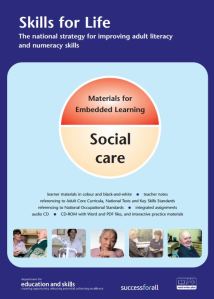
 In planning to support her team of assessors in understanding how to embed Functional English support into their work on a Traineeship programme, Marie Robertson (left), a manager at Anne Clarke Associates Ltd, chose to design a session taken from a Health and Safety module. As Health and Safety can sometimes seem a routine and dry topic to explore, Marie begins the session with pair or group activities that will be interactive, stimulating and discussion based –
In planning to support her team of assessors in understanding how to embed Functional English support into their work on a Traineeship programme, Marie Robertson (left), a manager at Anne Clarke Associates Ltd, chose to design a session taken from a Health and Safety module. As Health and Safety can sometimes seem a routine and dry topic to explore, Marie begins the session with pair or group activities that will be interactive, stimulating and discussion based –
- She may ask learners to guess the top ten most dangerous jobs in Britain and then share some up to date and surprising statistics from the media
- She may ask learners to carry out a hazard spotting task either on paper (see below) or perhaps by using web-based tool like Thinglink to create a task that would involve learners in placing ‘hot spots’ on an image using a PC or a tablet (click here to see an example)
Marie then develops the session using an incident report as the basis for a sequence of active learning tasks that aim to develop some key writing skills. Some of the activities include –
- a discussion of the range of people who might read the form and why (audience and purpose)
- a sequencing task that involves matching information to the correct sections of the form
- identifying language features of different sections of the form
- a task to practise writing in the past tense with related spelling patterns
- a report writing activity using a YouTube clip as a stimulus
(Click here if you would like download the session plan and some of the learning activities.)
In working through this session with assessors Marie would use it as a practical example to illustrate some key features of an embedded approach to English that are illustrated in the Materials for Embedded Teaching and Learning folders developed as part of the National Skills for Life Strategy. She would therefore encourage assessors to –
- use real life documents as a starting point

- explore how audience and purpose shape the structure, content and vocabulary of a text
- use active learning tasks to engage learners in noticing key language features
- explore aspects of grammar and spelling in context
- provide a writing frame to support learners in structuring a text
Marie plans to use additional exemplar material from the Social Care folder as most of her assessors work within that sector.




